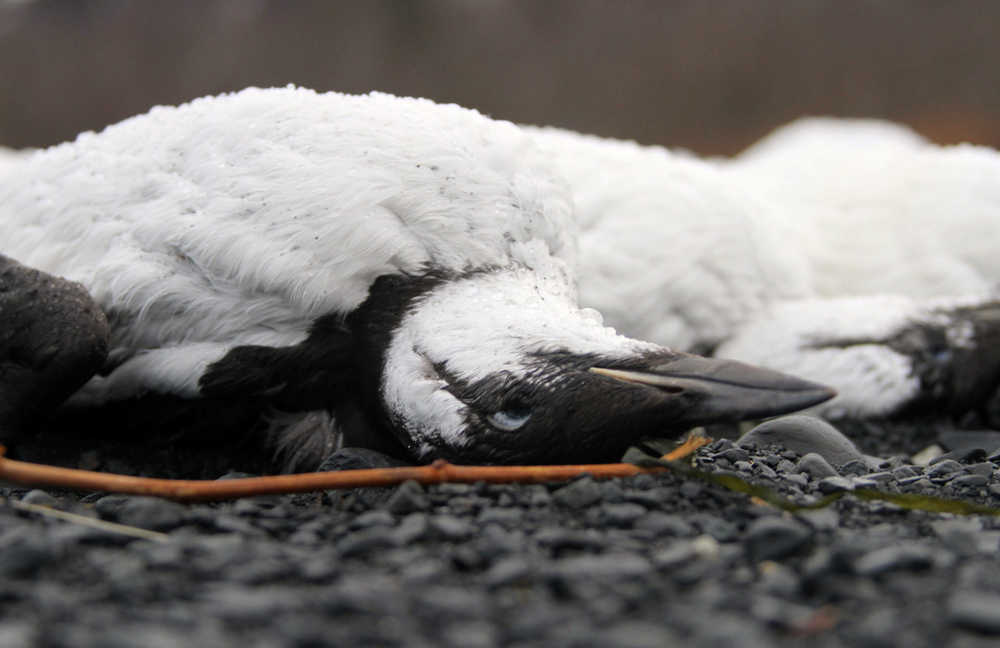ANCHORAGE — A federal laboratory that assesses disease in wildlife is calling for more research into the deaths of thousands of common murres and other seabirds off Alaska’s coast.
The National Wildlife Health Center, part of the U.S. Geological Survey, on Friday issued a wildlife bulletin on emaciated common murres found dead over the past 11 months.
Alaska seabird deaths are getting the attention of multiple federal and state agencies, said Julie Lenoch, deputy director of the wildlife health center in Madison, Wisconsin. The center issues bulletins when there’s a need for an information exchange about a significant wildlife health threat, Lenoch said.
“We really look for large-scale events that may be toxic or infectious in nature, may pose an additional threat to other species, or simply for awareness,” she said.
Common murres are one of North America’s most abundant seabirds and are found throughout the Arctic. Murre carcasses from the dozens to thousands since March have been found on beaches from the Alaska Panhandle to the east Aleutian Islands.
From May to September, seabird deaths also included thick-billed murres, black-legged kittiwakes, horned and tufted puffins, murrelets, glaucous-winged gulls and sooty and short-tailed shearwaters. Some bird deaths occurred at the same time agencies were investigating whale and sea otter deaths. A connection to concurrent marine mammal deaths has not been established, Lenoch said.
“There’s still a lot of information pending and things we need to check to see if they’re related,” she said.
Common murres have been hit especially hard. During the first week of January, federal officials found an estimated 8,000 dead common murres on the beaches of Whittier, a Prince William Sound community.
Large floating aggregations of lethargic murres are being reported in Prince William Sound. The murres are “exhibiting minimal avoidance behavior,” according to the bulletin.
Deaths have not abated in the last three weeks.
“They’re still finding significant numbers of carcasses,” Lenoch said.
Through Thursday, the center had examined 106 seabird carcasses, including 81 common murres, and found no evidence of infectious disease.
“The most common finding for both juvenile and adult specimens has been emaciation,” the bulletin said.
Results are pending for algal toxins in testing by the National Oceanic and Atmospheric Administration, the University of California at Santa Cruz and Greenwater Laboratories.
Common murres are deep divers that feed on small fish such as herring, juvenile cod and capelin. Alaska wildlife officials say murres may be starving because they cannot find schools of forage fish affected by warmer water tied to global warming, the El Nino weather pattern or the Pacific Blob, a mass of warm water in the North Pacific.
The bulletin calls for investigating the effects of a warmer ocean.
“Further research is needed to determine if potential impacts of recent unprecedented warm ocean temperatures may be affecting seabird prey distribution or abundance,” the bulletin said.

